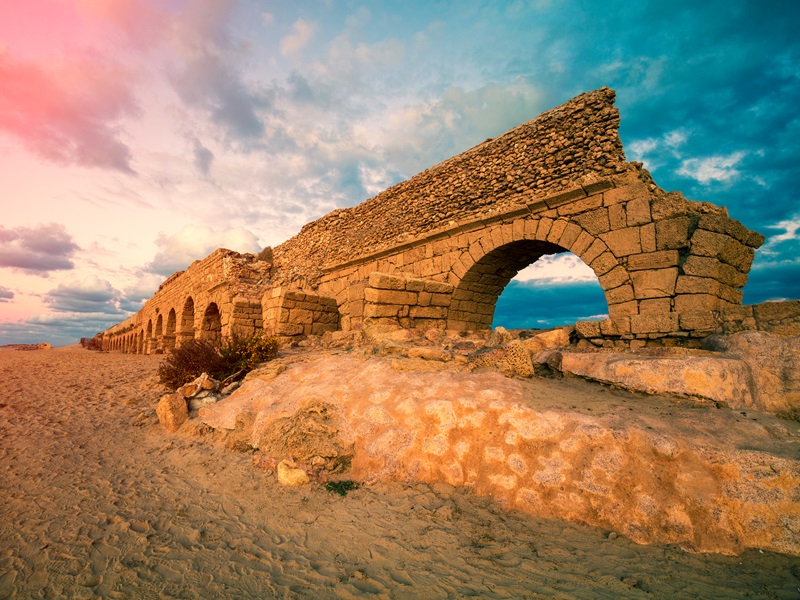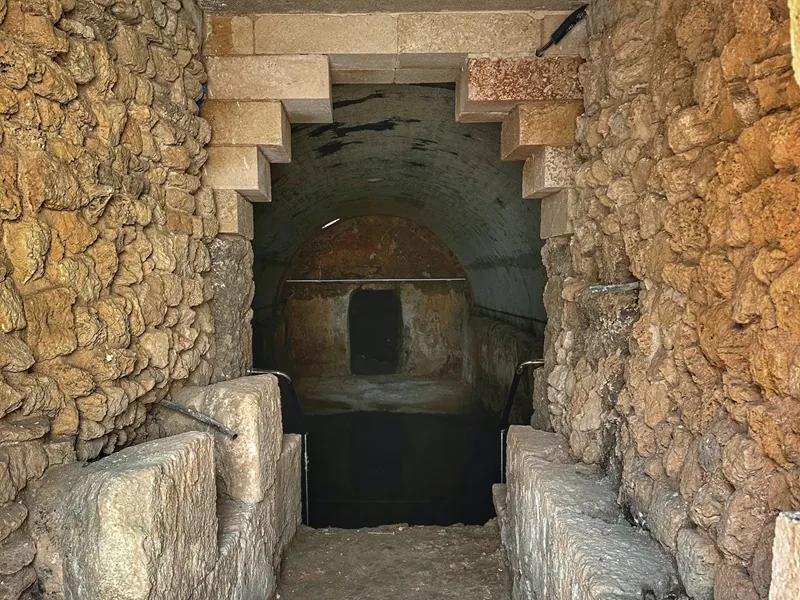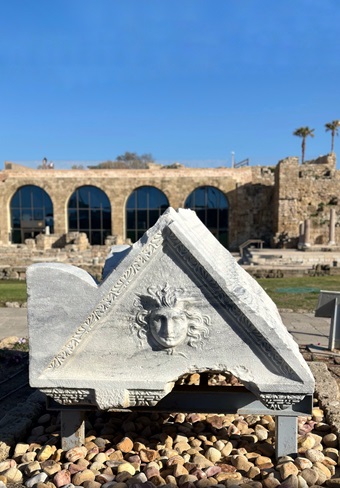Tour to Caesarea

Set along the sandy coastline of the eastern Mediterranean Sea, Caesarea “Maritima” (“on the sea”) was a significant city port in Roman and Byzantine times. Today, Caesarea is a national park and one of Israel’s most popular tour destinations.
A Brief Historical Review
In 25 BCE, King Herod the Great established Caesarea and named it in homage to Caesar and Rome. It quickly developed as a major port city, and in the Byzantine period, it elevated to a provincial capital. Its final abandonment was in 1265 CE and up to the 19th century when a small Muslim Bosnian village developed over its ruins. However, in the 1920s, the Jewish philanthropist Edmond the Rothschild purchased its grounds. Following the 1948 War of Independence, Israel declared Caesarea a national park, with the management of the Rothschild Foundation. Several archaeological expeditions uncovered parts of the ancient metropolis, followed by significant development for tourism.
Touring Caesarea Today
Nowadays, Caesarea is a national park, welcoming visitors every day of the week, from 8:00 to 18:00. The site boasts a wealth of finds from Roman, Byzantine, and Crusader periods complemented by fine dining options and art galleries. The site is under constant development, such as a new visitors’ center opening in 2021.
Caesarea’s Theatre – Start at the partially restored Roman era set next to Herod’s palace. Initially designed to accommodate 9,000 spectators, it is still used for popular summer concerts.
Herod’s Palace – Overlooking the Mediterranean, Herod’s palace once boasted a lavish living with breathtaking seaside views. Some suggest that a space beneath it may have been used to imprison Paul (Acts 23:35).
Caesarea’s Hippo-Stadium – Walk through a unique entertainment facility designed as a racetrack for horses (Hippodrome) and a stadium. Later, it is also used as an amphitheater with a public latrine.
Herod’s Port – Conclude at Herod’s most remarkable feat of engineering. This harbor could accommodate up to 100 Roman cargo boats, and in its time, it was the biggest man-made port in the entire Roman empire.
Special activities In and Around Caesarea
 Beyond its archaeological wonders, Caesarea offers unique activities such as snorkeling and scuba diving in Herod’s sunken harbor. If you wish to stay dry, consider a hike to the city’s ancient synagogue and aqueduct.
Beyond its archaeological wonders, Caesarea offers unique activities such as snorkeling and scuba diving in Herod’s sunken harbor. If you wish to stay dry, consider a hike to the city’s ancient synagogue and aqueduct.
You can also reach these sites in an exciting off-road EZ Raider tour, which will take you to Caesarea’s Byzantine Street and eastern Hippodrome. Art and archaeology enthusiasts can visit the Ralli Museum and Sdot-Yam Museum or partake in a glassblowing workshop at the harbor.
A tour of Caesarea can be combined in a day tour in the north, or as part of a comprehensive a multi-day tour of Israel.










